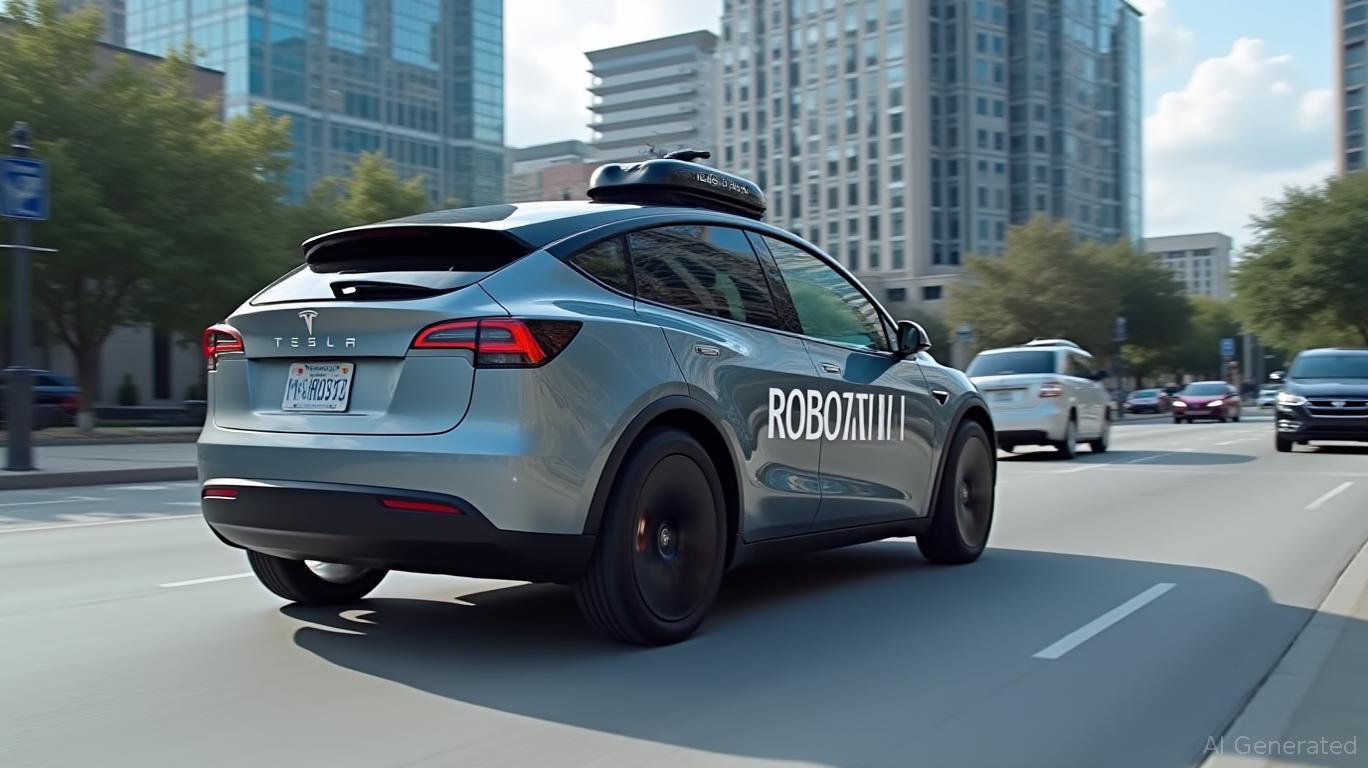Tesla's Robotaxi Launch in Austin: A Bold Gambit for Autonomous Dominance
The rollout of Tesla's Robotaxi service in Austin, Texas, on June 22, 2025, marks a pivotal moment in the race to commercialize autonomous vehicles (AVs). While delayed and scaled back from Elon Musk's original “no human inside” vision, the launch underscores Tesla's aggressive push to leverage its software prowess and EV scale to dominate mobility-as-a-service (MaaS). This move positions
as both a disruptor in automotive and a contender in the tech-driven AV market—a dual identity that could redefine valuation multiples and revenue streams.
Strategic Implications: Software as the New Engine
Tesla's Robotaxi strategy hinges on its Full Self-Driving (FSD) software, which it aims to monetize directly through MaaS. Unlike traditional automakers, Tesla treats software as its core product, not just a feature. By deploying a fleet of Model Ys optimized for Austin's roads (geofenced for now), Tesla is testing a model where software upgrades can be pushed over-the-air to improve performance, much like a video game. This contrasts sharply with Waymo's hardware-heavy approach, which relies on lidar and pre-mapped environments.
The scale advantage is Tesla's secret weapon. With over 2 million vehicles on the road equipped with FSD hardware, Tesla can gather vast amounts of real-world data to train its neural networks. Competitors like Cruise and Waymo, limited to smaller test fleets, lack this data moat.
Revenue Streams: Beyond Cars to Mobility Services
The Robotaxi launch opens a $2 trillion addressable market for Tesla. Analysts estimate that autonomous MaaS could contribute $50–100 billion annually to Tesla's top line by 2030, dwarfing its current EV sales. Key revenue levers include:
- Subscription-based FSD upgrades for private owners.
- Fleet management fees for corporate and municipal clients.
- Advertising revenue from in-car screens (à la Tesla's “Tesla Theater”).
Crucially, Tesla's vertical integration—owning both hardware and software—gives it margin advantages over rivals like Uber Advanced Technologies (UAT) or Cruise, which depend on partnerships with automakers.
Valuation: Tech Multiple or Auto Multiple?
Tesla's valuation has long been debated: Is it a car company (10x EV/Sales) or a tech firm (30x EV/Sales)? The Robotaxi rollout leans toward the latter. If Tesla can prove its software's safety and scalability, investors may re-rate it closer to $1 trillion+ (vs. its current $500 billion). Competitors like Waymo (part of Alphabet) operate at razor-thin margins, but Tesla's EV leadership could allow it to blend both worlds: high margins from premium vehicles and high volume from MaaS.
Risks: The Roadblocks Ahead
- Regulatory hurdles: Texas's delayed September 2025 regulations and NHTSA's scrutiny over FSD crashes (e.g., school bus incidents) could force costly pauses.
- Technical limitations: Tesla's camera-only system struggles in rain and low light, unlike lidar-equipped rivals. The disengagement rate of 1 critical incident every 444 miles (vs. Waymo's 1:10,0i00) raises safety concerns.
- Market competition: Waymo's 200,000 weekly rides in Austin and Cruise's night-optimized fleet highlight Tesla's underdog status.
Investment Thesis: A Buy for Long-Term Visionaries
Despite risks, Tesla's Robotaxi is a buy for investors willing to bet on Musk's vision of autonomous dominance. Key catalysts include:
1. Scaling the fleet: Musk aims to expand to 1,000+ Robotaxis in Austin by year-end, with Los Angeles and San Francisco next.
2. Software upgrades: FSD v14+ could address geofence and weather limitations, pushing the system closer to “no human inside.”
3. Regulatory wins: Proving safety in Texas could set a precedent for national expansion.
Conclusion: The Bet on Tesla's Software Stack
Tesla's Robotaxi launch is not a finished product but a strategic pivot toward software-defined mobility. While competitors like Waymo have deeper technical expertise, Tesla's ecosystem—EV scale, data troves, and Musk's relentless execution—gives it an edge in the long game. For investors, the question is whether Tesla can turn today's cautious pilot into tomorrow's autonomous gold standard. For now, hold for the volatility but buy for the vision.
Recommendation: Buy Tesla for long-term growth portfolios with a 5+ year horizon. Monitor regulatory approvals, disengagement rates, and fleet expansion closely. Avoid if risk tolerance is low or time horizon is short.
This article does not constitute financial advice. Readers should conduct their own research and consult a professional advisor before making investment decisions.

Comments
No comments yet